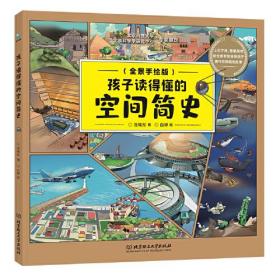
弹性力学(第2版 英文版)
品相核验准确、体验好,不符包售后;下午5点前订单,当日发货
¥ 141.17 九五品
仅1件
四川成都
认证卖家担保交易快速发货售后保障
作者伍章健、武海军、韩峰 著
出版社北京理工大学出版社
出版时间2017-06
版次2
装帧平装
货号9787568242042023
上书时间2024-11-18
- 最新上架
商品详情
- 品相描述:九五品
图书标准信息
- 作者 伍章健、武海军、韩峰 著
- 出版社 北京理工大学出版社
- 出版时间 2017-06
- 版次 2
- ISBN 9787568242042
- 定价 56.00元
- 装帧 平装
- 开本 16开
- 纸张 胶版纸
- 页数 356页
- 字数 469千字
- 正文语种 英语
- 【内容简介】
-
《弹性力学(第2版 英文版)》主要介绍弹性力学经典内容和作者zui新研究成果,整个结构体系综合了北京理工大学和英国曼彻斯特大学多年来在弹性力学教学中的大纲、内容和成果,为适应当前高等教育对双语教学的发展需求,本书内容的安排和撰写参考了经典著作和zui新教研成果,并结合了读者对第一版的反馈以及在弹性力学教学方面zui新收获。为了更好地适应读者在双语教学环境下使用以及促进数值模拟和工程计算在弹性力学中的应用,与第一版不同的是在第二版中增加了有限差分法和有限元法内容。
通过使用和阅读本书,结合中文教材能够学到弹性力学的基础知识、标准术语,提高专业英语能力、本书可作为工科类高等学校,尤其是力学类的高年级本科生和研究生双语课程和教学参考书,或者作为工程师、研究人员和初学者的英文参考书。 - 【目录】
-
CHAPTER 1 BASIC ASSUMPTIONS AND MATHEMATICAL
PRELIMINARIES
1.1 Introduction
1.2 Basic Assumptions
1.3 Coordinate Systems and Transformations
1.4 Vector and Matrix Notations and Their Operations
1.5 Divergence Theorem
Problems/Tutorial Questions
CHAPTER 2 STRESSES
2.1 Stress and the Stress Tensor
2.2 Equilibrium Equations
2.3 Traction Boundary Conditions
2.4 Stresses on an Oblique Plane
2.5 Principal Stresses
2.6 Stationary and Octahedral Shear Stresses
2.7 Equilibrium Equations in Curvilinear Coordinates
Problems/Tutorial Questions
CHAPTER 3 STRAINS
3.1 Strains
3.2 Finite Deformations
3.3 Strains in a Given Direction and Principal Strains
3.4 Stationary Shear Strains
3.5 Compatibility
3.6 Kinematic and Compatibility Equations in Curvilinear Coordinates
3.7 Concluding Remarks
Problems/Tutorial Questions
CHAPTER 4 FORMULATION OF ELASTICITY PROBLEMS
4.1 Strain Energy Density Function
4.2 Generalised Hooke's Law
4.3 Initial Stresses and Initial Strains
4.4 Governing Equations and Boundary Conditions
4.5 General Solution Techniques
4.6 St.Venant's Principle
Problems/Tutorial Questions
CHAPTER5 TWO-DIMENSIONAL ELASTICITY
5.1 Plane Strain Problems
5.2 Plane Stress Problems
5.3 Similarities and Differences Between Plane Strain/Plane Stress Problems
5.4 Airy Stress Function and Polynomial Solutions
5.5 Polar Coordinates
5.6 Axisymmetric Stress Distributions
5.7 Rotating Discs
5.8 Stresses Around a Circular Hole in a Plate Subjected to Equal Biaxial Tension-Compression (Pure Shear in the 45°Direction)
5.9 Stress Concentration Around a Circular Hole in a Plate Subjected to Uniaxial Tension
5.10 Concluding Remarks
Problems/Tutorial Questions
CHAPTER 6 TORSION OF BARS
6.1 Torsion of Bars in Strength of Materials
6.2 Warping
6.3 Prandtl's Stress Function
6.4 Torque
6.5 Bars of Circular and Elliptical Cross-Sections
6.6 Thin-Walled Structures in Torsion
6.7 Analogies
Problems/Tutorial Questions
CHAPTER 7 BENDING OF BARS
7.1 Bending Theory in Strength of Materials
7.2 Elasticity Formulation of Bending of Bars
7.3 Stress Resultants and Shear Centre
7.4 Bending of a Bar of a Circular Cross-Section
7.5 Bending of a Bar of an Elliptical Cross-Section
7.6 Analogies
Problems/Tutorial Questions
CHAPTER 8 THE STATE SPACE METHOD OF 3D ELASTICITY
8.1 Concept of State and State Variables
8.2 Solution for a Linear Time-Invariant System
8.3 Calculation ofe[A]t
8.4 Solution of Linear Time-Variant System
8.5 State Variable Equation of Elasticity
8.6 Application ofState Space Method
8.7 Conclusions
Problems/Tutorial Questions
CHAPTER9 BENDINGOFPLA7ES
9.1 Love.KirchhoffHypotheses
9.2 TheDisplacementFields
9.3 Strains and Generalised Strains
9.4 Bending Momems
9.5 The Governing Equation
9.6 GeneralisedForces
9.7 Boundary Conditions
9。8 RectangularPlates
9.9 CircularPlates
Problems/Tutorial Questions
CHAPTER 10 ENERGYPRINCIPLES
10.1 Introduction
10.2 Work,Strain Energy and Strain Complementary Energy
10.3 Principle ofVirtualWork
10.4 Application ofthe Principle ofVirtual Work
10.5 The Reciprocal Law ofBetti
10.6 Principle ofMinimum Potential Energy
10.7 Principle ofVirtual Complememary Work
10.8 Principle of Minimum Complementary Energy
10.9 Castigliano's Theorems
10.10 Application of the Principles of Minimum Strain Energy
10.11 Rayleigh-Ritz Method
Problems/Tutorial Questions
CHAPTER 11 FINITE DIFFERENCE METHOD
11.1 Finite Difference Formulations
11.2 Relations of Difference and Differential Operators
11.3 Difference Pattern for Laplace and Bi-harmonic Operators
11.4 Case Study
11.5 Boundary Condition for Plane Problem Bi-harmonic Function
11.6 Irregular Boundary and Uneven Mesh Intervals
Problems/Tutorial Questions
CHAPTER 12. FINTTE ELEMENT METHOD
12.1 Introduction
12.2 Outline of FEM
12.3 Formulation of Displacement Model
12.4 Triangular Element
12.5 Nodal Force Vector
12.6 Rectangular Element
12.7 Transformation Matrix and Assembly of Structure Stiffness Matrix ~
12.8 Other Remarks
Problems/Tutorial Questions
CHAPTER 13 SPECIAL TOPICS FOR ELASTICITY
13.1 Thermal Elasticity
13.2 Propagation of Elastic Wave
13.3 Strength Theory, Crack and Fracture
Problems/Tutorial Questions
References
点击展开
点击收起
— 没有更多了 —












以下为对购买帮助不大的评价